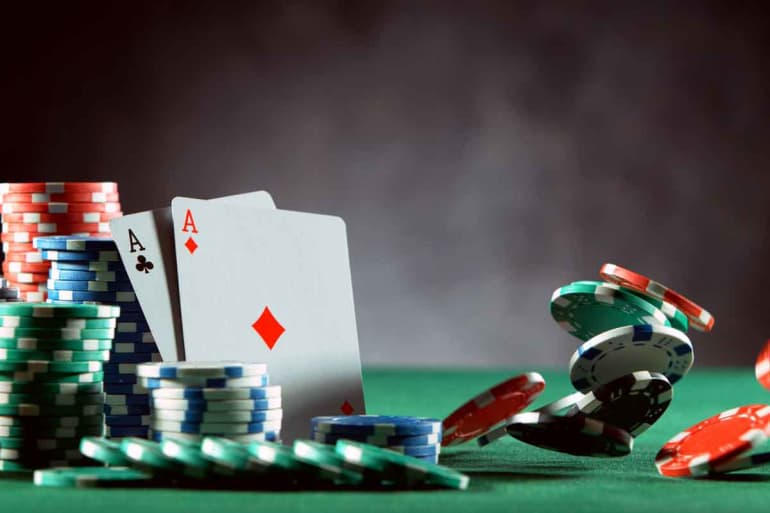If you’re struggling with an addiction to gambling, you’re fighting back against a system designed to keep you trapped. As of 2014, the gambling industry in the United States was worth $240 billion. Companies thrive on keeping you in front of the slot machine or sitting at the table. Though it seems these companies stacked the cards against you, you can escape your gambling addiction.
Gambling takes many forms and isn’t only centralized in places like Las Vegas or Atlantic City. You can show signs of gambling addiction in various types of betting practices:
- Table games (poker, blackjack, craps, roulette)
- Slot machines
- Internet gambling games (online poker, slots, etc.)
- Sports betting (football games, basketball games, horse races, etc.)
- Lottery tickets or scratcher cards
- Bingo
- Raffle tickets
What does a gambling addiction look like? How do you know if you or someone you love lives with a gambling problem? And how can you escape your addiction to gambling? Continue reading to learn more about problem gambling, its psychological effects, and ways to step away from the slots and cards forever.
What is a Gambling Addiction?
Millions of people flock to gambling capitals of the country every year. Atlantic City welcomed 24.1 million individuals in 2017. Las Vegas housed a staggering 39 million in the same year. The majority of tourists in these cities keep their gambling to a contained minimum. They walk in with a gambling budget and refuse to spend more than the funds they allow themselves.
These individuals come to casinos for the free drinks that make the rounds when they sit at a slot machine or card table. They laugh with friends as they press bright buttons or stack chips in front of them. Ultimately they know they will most likely walk out empty-handed but they prepare for and are okay with that. They have fun regardless because they stay in their budget.
Or for another example, every year during the Super Bowl you can easily find a few different pools to bet on. Whether at your office, with your family, or in your group of friends, millions of people bet a few dollars to put their name in a square for the chance to win the larger pool. The extent of their gambling ends there, though.
But those with an addiction to gambling live a much different reality. The flashing lights and blaring sounds are merely background noise to their self-imposed cage. They live for the “high” of the quick wins. The frustration and feeling “down” quickly snaps back with the shot of dopamine provided by a “hit,” or win.

Addiction to Gambling Statistics
As the public awareness of gambling addiction expands, researchers conduct more and more studies. This helps them grasp the seriousness of the problem in order to treat it more effectively.
The National Council on Problem Gambling conducts a large amount of research each year. According to recent studies, about 2.2 percent of the US population, or 5.45 million people, show signs of problem gambling. Additionally, men show a higher risk of developing an addiction to gambling. Young men show some of the highest rates of problem gambling.
Researchers also gather data on the amount of money each state makes from gamblers. California makes the most money from gambling each year, with its massive state lottery. New York follows closely behind with its own large lottery pool. Nevada, easily the casino capital of the country, comes in third for state revenue from gambling.

Gambling addiction affects more than just the gambler: spouses, parents, children, friends and loved ones suffer too. What are the signs of problem gambling?
More infoWhat Does Addiction to Gambling Look Like?
Addiction to gambling is not just a random label attached to people who can’t stop gambling. The American Psychological Association recognizes gambling addiction as an official mental health disorder. Their publication, the Diagnostic and Statistical Manual of Mental Disorders (DSM-5) outlines criteria for problem gambling.

In order to diagnose an individual with an addiction to gambling, the person must show at least four of the following symptoms:
- Gamble with more money in order to achieve the resulting excitement
they seek. - Experience feelings of restlessness irritation, or frustration when
they try to cut down on or stop gambling. - Have multiple failed attempts to cut back on or quit gambling.
- Thoughts often occupied by gambling or figuring out how to gamble (whether how to get the money, where to gamble at, how to hide their addiction to gambling, etc.)
- Gamble when feeling overwhelmed or stressed as a means to calm down.
- Losing money to gambling then getting more in order to make up for the losses.
- Lying to those around them to hide their gambling.
- Losing an important relationship (such as a spouse, parent, or child), job opportunity, or education as a result of gambling behaviors.
- Relying upon money from others, whether gifted, loaned, or stolen, to continue gambling.
If you question whether or not you show signs of problem gambling, quickly quiz yourself using the signs above. Get honest with yourself; you can come to a fast conclusion about whether or not to worry. If you believe you qualify, don’t lose hope just yet. There are treatment centers that specialize in helping you overcome your addiction to gambling.
How to Find Help with Your Addiction to Gambling
Treatment centers offer programs to help combat troubles with addiction to gambling. Hawaii Island Recovery has staff who understands gambling addictions and how to treat them. If you need help with your addiction, our facility can help.
 Hawaii Island Recovery
Hawaii Island Recovery 










